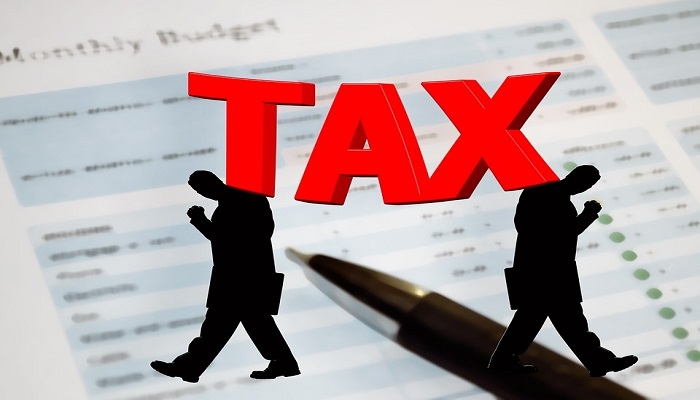
The federal government, in 1935, passed the Federal Insurance Contribution Act (FICA), which established taxes to help fund Medicare and Social Security. The FICA tax is 15.3 percent, paid by employees and employers, who split the burden into half each by paying 7.65 percent. In 1954, the government passed a Self-Employed Contributions Act (SECA) to ensure that freelancers contribute towards Social Security and Medicare. The act established that these individuals would pay the whole 15.3 percent without any other party splitting the burden. This tax is known as the SECA or self-employment tax. Although this difference might seem significant, individuals who stay on top of their taxes get significant advantages of IRS debt relief and can save thousands of dollars a year. In this blog post, we shall discuss everything you need to know about self-employment taxes. Read on.
Self-Employment Tax Calculation
The total SECA tax that self-employed individuals pay is 15.3 percent of their net earnings. This tax consists of two parts-Social Security which is 12.4 percent and the remaining 2.9 percent is Medicare. The government sets a maximum amount of net earnings that are subject to the Social Security tax. Anything over that amount is not subject to the tax. The maximum amount has steadily increased over time and may change annually. For the current year, it is $137,700. To explain it better, let’s take an example. Say, you have $150,000 of net earnings from self-employment in 2020. You will pay a 12.4 percent tax on the first $137,700. However, you do not have to pay any Social Security tax on the remaining $12,300. On the other hand, unlike Social Security, the Medicare tax applies to all of your net earnings regardless of your earnings. For instance, if you have $150,000 of net earnings, you must pay the 2.9 percent Medicare tax on the entire $150,000. Since 2013, under the Affordable Care Act (ACA), there is an additional 0.9 percent Medicare surtax on income over a threshold which is $200,000 for individuals filing as single, $250,000 for a couple filing jointly, and $125,000 for couples filing separately. If you file as single and earn $250,000 over the year, the first $200,000 is subject to the 2.9 percent Medicare tax. The remaining $50,000 is subject to the 0.9 percent surtax for a total tax of 3.8 percent.
How the IRS Views Self-employed and Their Taxes
For the IRS, you are expected to pay taxes on the profit of your business just like any big-scale business. When it’s time to pay your taxes, you may be issued a 1099 MISC, 1099 K, or other tax documents and the government will likely keep a copy. With the help of a debt attorney, you can demand a claim for your expenses. For instance, imagine A and B working as freelancers. Both earned $40,000 and spent $10,000 on gasoline and other business-related expenses. The take-home profit of both is $30,000, however, A didn’t record many of his expenses and files with a taxable income of $36,000 whereas B kept meticulous records and files with a taxable income of $30,000. B’s tax bill will likely be lower than A’s. The process of recording expenses and paying taxes as a freelancer is confusing, which is why the majority of part-time contractors hire accountants to make sure they are filing correctly and getting benefits of IRS debt relief.
Related Blog: 3 Common Ways the IRS Discovers Tax Frauds
Who Needs to pay SECA Tax?
As a rule, individuals who earn at least $400 over a tax year are expected to pay self-employment tax. This includes businessmen, independent contractors, and freelancers. People who are U.S. citizens but work for a foreign government are also required to pay SECA. You must also pay self-employment taxes if you earn more than $108.28 as an employee of a church. If you earn untaxed income in such situations and are unsure if it’s subject to self-employment tax, it’s always better to seek help from an IRS debt attorney. Also, you will pay self-employment tax if you work full-time for an employer who deducts the payroll taxes along with freelancing where you earn more than $400. Additionally, the self-employment tax applies regardless of your age. If you meet the above requirements and are already receiving Medicare and Social Security benefits, you will still have to pay the tax.
What are Net Earnings?
The 15.3 percent tax seems high, but the good news is that taxpayers only pay self-employment tax on net earnings. They can first subtract any deductions like business expenses from their gross earning which is half of the Social Security and Medicare taxes. The IRS considers the employer portion of the self-employment tax of 7.65 percent as a deductible expense. Only 92.35 percent of the net earnings (gross earnings minus any deductions) are subject to SECA tax. There are many other tax deductions that self-employed individuals can claim to reduce their taxable earnings, like if they use their homes for business. For instance, if you earn $2,500 from a freelance job and claim $1,500 in deductions. You would then multiply the net $1,000 ($2,500 minus $1,500) by 92.35 percent to determine your taxable earnings.
Related Blog: Simple Ways to Settle IRS Tax Debts
Self Employment Tax Filing
While filing your annual return, use Schedule C of Form 1040 to calculate your net self-employment income. If the business expenses come out to $5,000 or less, you can file Schedule C-EZ instead of Schedule C which can show your calculated income or loss. This number will then be used on Schedule SE (Form 1040), Self-Employment Tax to calculate how much tax you should have paid throughout the year. In case of a joint return with another self-employed person, you must calculate your self-employment taxes separately as the government does not allow joint filers to merge their incomes. In addition to filing an annual tax return, you generally have to make quarterly estimated tax payments and use Form 1040-ES, Estimated Tax for Individuals. You will require your annual tax return from the previous year to correctly fill out this form. Filling out the form’s worksheet will determine if you need to file a quarterly estimated tax. You can also use an Electronic Federal Tax Payment System or mail-in blank vouchers found in Form 1040-ES for filing your tax returns.
Wrap Up
Self-employment tax ensures that freelancers make the same contribution and receive the same benefits as salaried individuals. The 15.3 percent may shock at first, but when all is said and done, tax deductions can save you a lot from paying the entire tax. But self-employed individuals may have to do a lot of math as they don’t have an employer who can ease things up for them. If you are overwhelmed by IRS tax debt call us for a free consultation, simply call (972) 426-2553 or fill out our contact form and we’ll take it from there.


